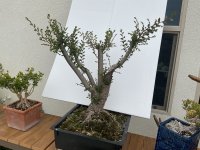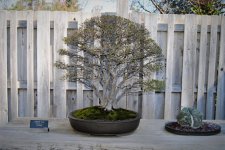Patric27
Seedling

Total newbie, educating myself online.
This Chinese elm came from a local nursery, where I had to chop the four trunks to get the tree in my car. I reduced the root mass to fit in this Anderson box in January.
I have not done much else, and from general online sources I suspect I shouldn’t think to do anything this year.
Is that correct?
The trunk is about 4 inches wide at the thickest, and it’s about 20 inches tall at its tallest. I am open to any styling and care suggestions you have to make.










